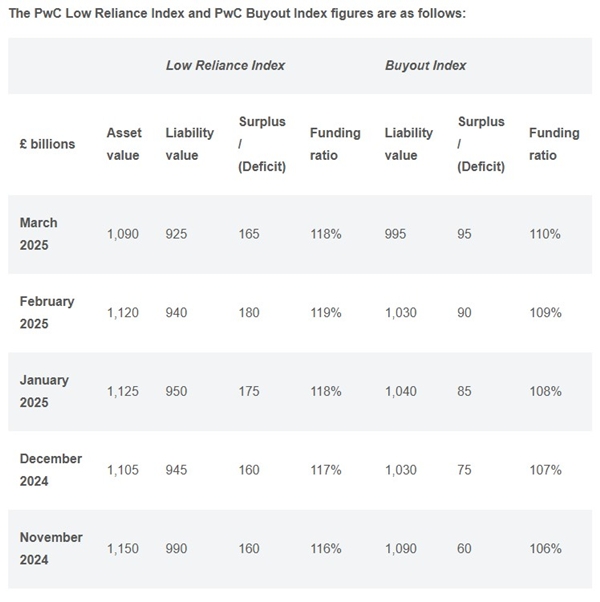Meanwhile, PwC’s Low Reliance Index also recorded a significant surplus of £165bn - this tracks the UK’s DB schemes based on a low-risk income-generating investment strategy, which should mean the pension scheme would be unlikely to call on the sponsor for further funding.
However, these continued surpluses shouldn’t mask the fact that schemes are facing a number of challenges, including uncertainties caused by recent market volatility over tariffs and concerns over data in light of the imminent rollout of pension dashboards.
Gareth Henty, PwC UK Head of Pensions, said: “The first quarter of 2025 was steady for UK pension schemes’ funding positions, despite volatility in global markets. Of course, companies and trustees have continued to carefully monitor the impact of market movements since - the wide-ranging tariff programme introduced by the US Government on 2 April has added another layer of uncertainty, with some dramatic movements in equity and bond markets being observed since.
“This increased volatility certainly isn’t the only thing trustees have to keep an eye on. More and more focus is on the task of preparing for pension dashboards - especially with the first few providers having recently completed testing and connected to the architecture. One of the primary issues trustees face is ensuring that scheme data is accurate, complete and accessible. However, many pension schemes, especially legacy ones, are grappling with outdated systems and inconsistent data.
“At our latest Virtual Ideas Exchange event, two thirds of respondents indicated that their scheme data needed some work - ranging from simple improvements to significant concerns to be resolved. Working out the best way to do this, especially given the capacity constraints in the administration market, is quickly climbing to the top of trustee agendas.”
Kristy Cotton, Head of Pensions Data at PwC, added: “As the deadline for dashboard implementation looms, proactive planning is vital. It’s important for trustees to understand early on how their schemes fit into the administrator’s pipeline of connections, and what plans, processes and controls are being put in place. In our experience, no news doesn’t tend to be good news on this front. Many schemes will also need to make sure that actions to identify and rectify data gaps are being factored into the timelines.
“Having a clear plan of action is especially critical for schemes who are working towards buyout and plan to complete this before the 31 October 2026 deadline. We’re increasingly seeing trustees outsource data cleansing work to help them move to buyout within this timeframe - administrator resource constraints shouldn’t define the scheme’s plan and goals.
“The significance of the operational activities required for schemes to connect to dashboards should not be underestimated. That’s why developing a comprehensive strategy that everyone has agreed on upfront is key. This will help ensure schemes are not only compliant with dashboards, but also positioned to deliver better outcomes for members through accurate, accessible pensions information.”

|

